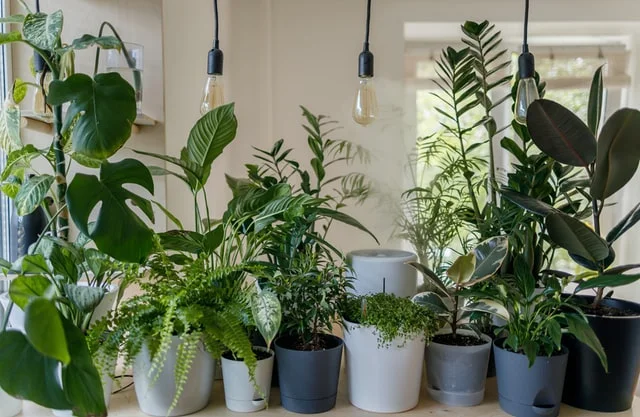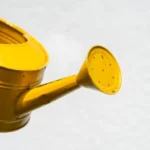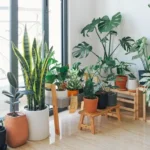Do different kinds of soil make a difference for the health of your plant?
If you’ve ever gone to a plant shop, you’ve probably seen a wide variety of bags containing soil in their inventory. This might be a pretty daunting prospect for someone who is just beginning out on their adventure with plants. Which bag should you use for the plant that you have? Does it make a difference which bag you choose to carry with you? Is it possible that your plant might be harmed if you choose the wrong bag of soil?
These are all excellent questions with legitimate worries! We’ll take a look at the most well-known varieties of soil mixtures in this plant care guide. We are going to investigate whether or not the soil mix that you purchase is suitable for the plant that you have, as well as whether or not the bag that you purchase makes a difference.
This article is not going to cover how to mix your own soil; rather, we are going to focus on the pre-mixed bags of soil that you can immediately utilize with your houseplants.
You have a number of options available to you when it comes to the soil that you may use for your houseplants. The following is a list of the most popular varieties of potting mixes that can be purchased in stores or ordered over the internet:
- Cactus/Succulent soil
- Indoor potting mix
- Cactus/Succulent soil Flower potting mix
- Plant-specific potting mixes
There are a variety of alternative soil mixtures, such as those for gardens and vegetable gardens. These sorts of soil mixes are sadly not suitable for use with houseplants, nor are they intended to be used as a soil mix for containers of any kind.
Let’s have a look at some of the reasons why you shouldn’t use soil mixtures intended for outdoor plants in indoor plant containers. After that, we’ll take a look at the many sorts of soil mixes that are available for houseplants and discuss whether or not these varieties truly make a difference in the overall health of your plant.
Table of Contents
Why aren’t outdoor soil mixtures suitable for houseplants?
When you go to a plant shop, you’ll find that they have a wide variety of different kinds of bags containing soil. This may be highly overwhelming for people who are just starting out as plant owners. There will be some bags labeled “soil mix” and others labeled “potting mix” for you to choose from. But what exactly does that entail? When you’re placing plants in pots, may you use soil mixes instead of plain dirt?
Let’s have a look at these two sorts of soil!
Garden soil
The first thing you may notice is that most stores have both potting soil and regular soil. Typical applications for the basic soil mix include vegetable and flower gardens. Because of the many drawbacks associated with its usage in containers, this particular variety of soil should not be put into containers of any kind.
- It retains a lot of moisture.
- It quickly becomes thick, preventing oxygen from reaching the roots of your plants.
You run the danger of overwatering your houseplants and risking root rot if you use this kind of soil with your indoor plants. If you wish to use this sort of soil with your houseplants, you will need to add additional ingredients to aid with drainage and to prevent compacting of your soil. This is necessary in order to utilize this type of soil.
Outdoor plant potting soil
You will also be able to buy potting soil that is specifically designed for use with outdoor plants, in addition to garden soil. It’s possible that you’re wondering whether or not you can use this on your houseplants. The quick answer is no, not until you add some other components to it.
In contrast to the soil in your yard, the potting soil will maintain its form rather well, and as a result, it will not prevent oxygen from reaching the roots of your plant. Nevertheless, outdoor potting soil continues to retain a far greater amount of moisture than does inside potting soil.
If you still wish to utilize the soil with indoor plants after adding drainage-improving components, it will be necessary for you to do so just as you would with garden soil. It is possible that you may drown your houseplant if you do not take steps to enhance the drainage.
We now know that you should not use any outdoor soil mix for your houseplants, even if it is for potted plants. If you are serious about using it for your plants, you are going to need to amend the soil with additional components so that it has a better structure and drains better. However, you should investigate the possibility of purchasing soil that is specifically formulated for use with indoor plants.
Let’s have a look at some of the most prevalent varieties of indoor plant soil!
Cactus and succulent soil mixture
The Cactus and Succulent soil mix is one of the pre-mixed bags of soil that has gained the greatest notoriety throughout the years. Is it true that this particular kind of soil is just suitable for succulents and cacti, or can it be used for any indoor plant?
The cactus and succulent soil combination has been formulated specifically for plants that thrive when the atmosphere around them is dry. This particular variety of soil does not retain a great deal of moisture and might become totally dry in only one or two days. This may seem like a terrible thing, but in reality, it provides the optimal growth conditions for plants that thrive in drought.
Succulents and cacti, as well as plants like the ZZ plant, do not tolerate wet soil for long. You will kill these plants by overwatering them if you use any kind of soil that retains water for several days and does not drain excess water as well.
In general, the following are some of the components that can be found in soil of this type:
- Sand
- Perlite
- Rocks
- Potting soil
Because sand, perlite, and rocks do not retain water, the soil will benefit from the good drainage that these components provide. Both the perlite and the rocks contribute to maintaining the structure of the soil, preventing it from becoming more compact over time. Your plants that are tolerant of drought will thrive in these conditions thanks to the combination of these substances.
Flower soil mixture
Flowers can be grown outside, however there are some types of flowers that must be grown indoors since they would perish if they were grown outside. The type of climate in which you reside will determine the types of flowers that may be grown outside and those that must be grown indoors. For optimal growth, most types of flowers require a substantial amount of both water and fertilizer. The production of these blooming plants requires a significant investment of energy. This energy must have originated from someplace, and the soil is the primary source.
Flower soil mixtures often retain a good deal of moisture and provide your flowers with a wealth of the nutrients they need to flourish when planted in the ground. Since the majority of flowers only bloom once before passing away, the flower soil mix is formulated to provide an abundance of nutrients to the plants it supports. On the other hand, unless you consistently add fertilizer whenever you plant fresh flowers, this soil won’t fare well over the long run.
In most cases, it is advisable to save flower soil mix for usage just with flowers. Since this sort of soil is able to hold onto a significant amount of moisture for an extended period of time, it is ideal for growing flowers; nevertheless, it will result in overwatering most other houseplants. You always have the option of enhancing the drainage of the soil mixture, after which you might use it for other plants as well as the original ones.
Indoor potting mix
Any conventional indoor potting mix will perform an excellent job as an all-around potting mix for your houseplants. This kind of potting soil works really well for the typical houseplant, and by adding a few other things to it, you can make it suitable for virtually any kind of houseplant.
Depending on the season and the amount of sunshine that the plants receive, a standard indoor potting mix will often retain its moisture for four to five days, which is beneficial for the majority of plant species. Since it is best to let indoor plants dry out for a few days before watering them again, this sort of soil is ideally suited for the majority of indoor plant species.
Add some peat moss, vermiculite, or sphagnum moss to the soil around your plant if you discover that it requires a little bit more humidity than it already has.
On the other hand, if you find that your plant is receiving an excessive amount of water, you may amend the soil by using elements such as perlite, sand, and pebbles. These components contribute to a quicker removal of excess moisture and will assist in maintaining the airiness of the soil, which is necessary for the transport of oxygen to the plant’s roots. You may look at the article titled “How to make your soil drain water quickly?” if you want further information about how to help enhance the drainage of your soil.
A basic indoor potting mix works well for the majority of houseplants, as you can see. It’s possible that some will require a few minor tweaks, but for the most part, this will be your best chance for caring for houseplants.
Plant-specific potting soil
There are a variety of standard potting soil mixes, but you may also discover soil mixes that are tailored to the needs of certain plants. These mixtures have been expertly blended to offer the plant the most favorable conditions possible for its development. If you locate a soil mix for a plant that you want to repot, this sort of soil mix would be the greatest choice since you would know that it has been created just for your plant.
It is more likely that you will discover these kinds of combinations on the internet than in physical plant stores, so you may have to hunt a little bit harder to find them.
The easiest option to provide your plant with the optimal growing circumstances that it prefers is to use pre-mixed bags of soil that are designed for individual plants. Therefore, if you come across a bag of soil for a plant that you want to repotte, it is in your best interest to select the more specialized mixture that you require.
You may also learn how to mix your own soil, which will ensure that your plants always have the optimal growing medium for them. Although this does require some experience, it is definitely something that should be attempted.
Conclusion
When we first started looking into this topic, one of our first questions was, “Do the various types of soil mixtures truly matter for my houseplant?” We observed in this plant care guide that various mixtures have a major impact on your plants and that it’s ideal to pick a soil mix that’s customized for your plant. The purpose of these soil mixtures is to provide you with the resources necessary to assist you in creating the perfect growing environment for your houseplants.
Some soils are quite good at holding onto moisture, while others are notoriously bad at doing so. Each type of soil mix has a certain function, and it will be up to you (with my assistance, of course) to choose which type of soil goes best with which plant.
When purchasing fresh soil, the most essential thing you can do is do research on the watering requirements of the plant you intend to grow. This will help you choose the right type of soil. Does your plant require a comparatively little amount of water? It’s possible that the cactus and succulent soil mix is just what you need for your plants. If your plant need additional moisture, look for a soil mixture that contains vermiculite or coconut coir. This will allow you to provide your plant with just what it requires.
Don’t worry if you’re still having trouble; with practice, you’ll figure out how to determine the optimal proportions of the ingredients. At first, everything is difficult for everyone, but eventually, we all figure it out.
I appreciate you taking the time to read my article. I really hope that this information is of use to you in maintaining the health and beauty of your plants.
Photo by vadim kaipov on Unsplash



